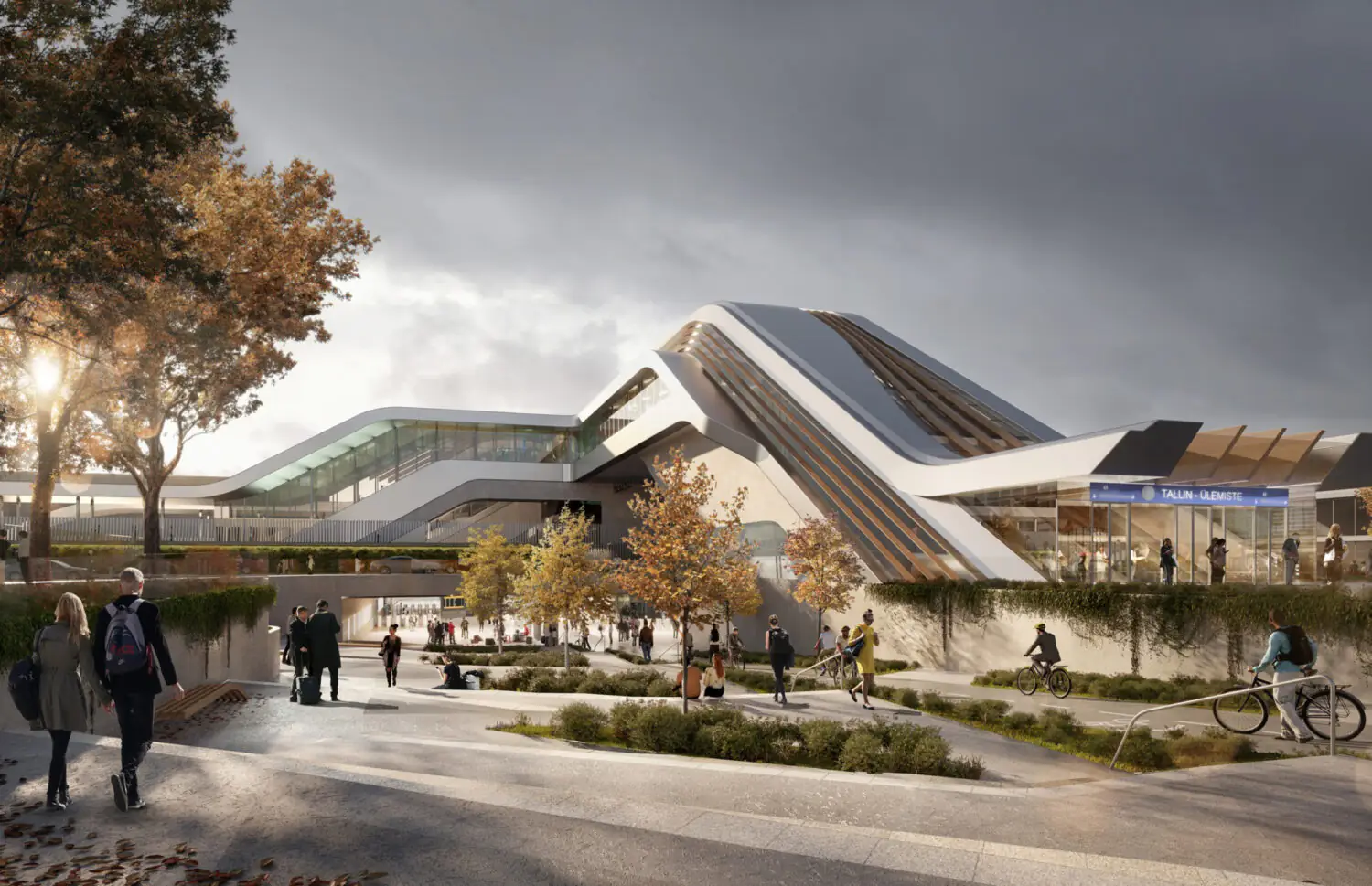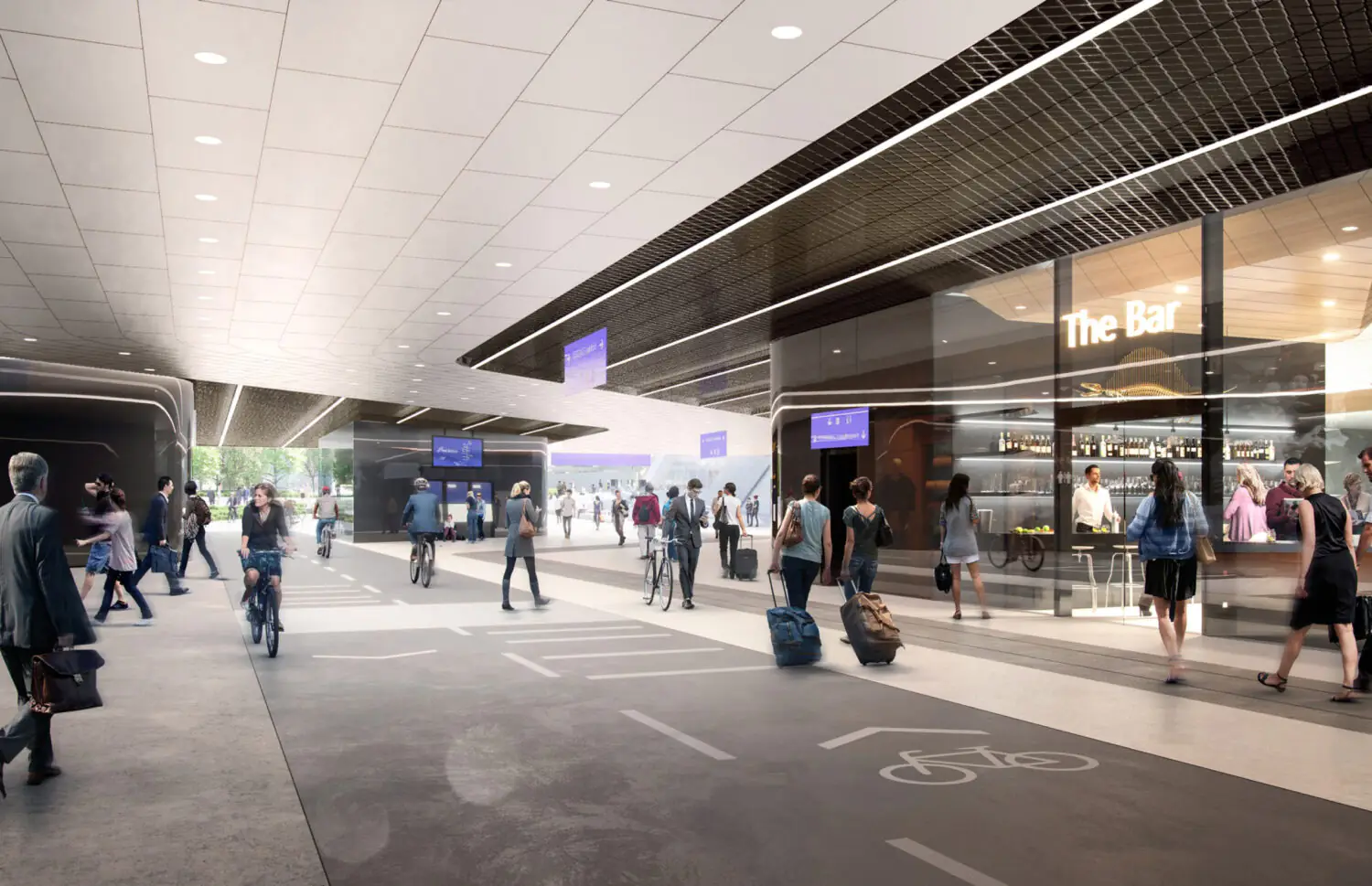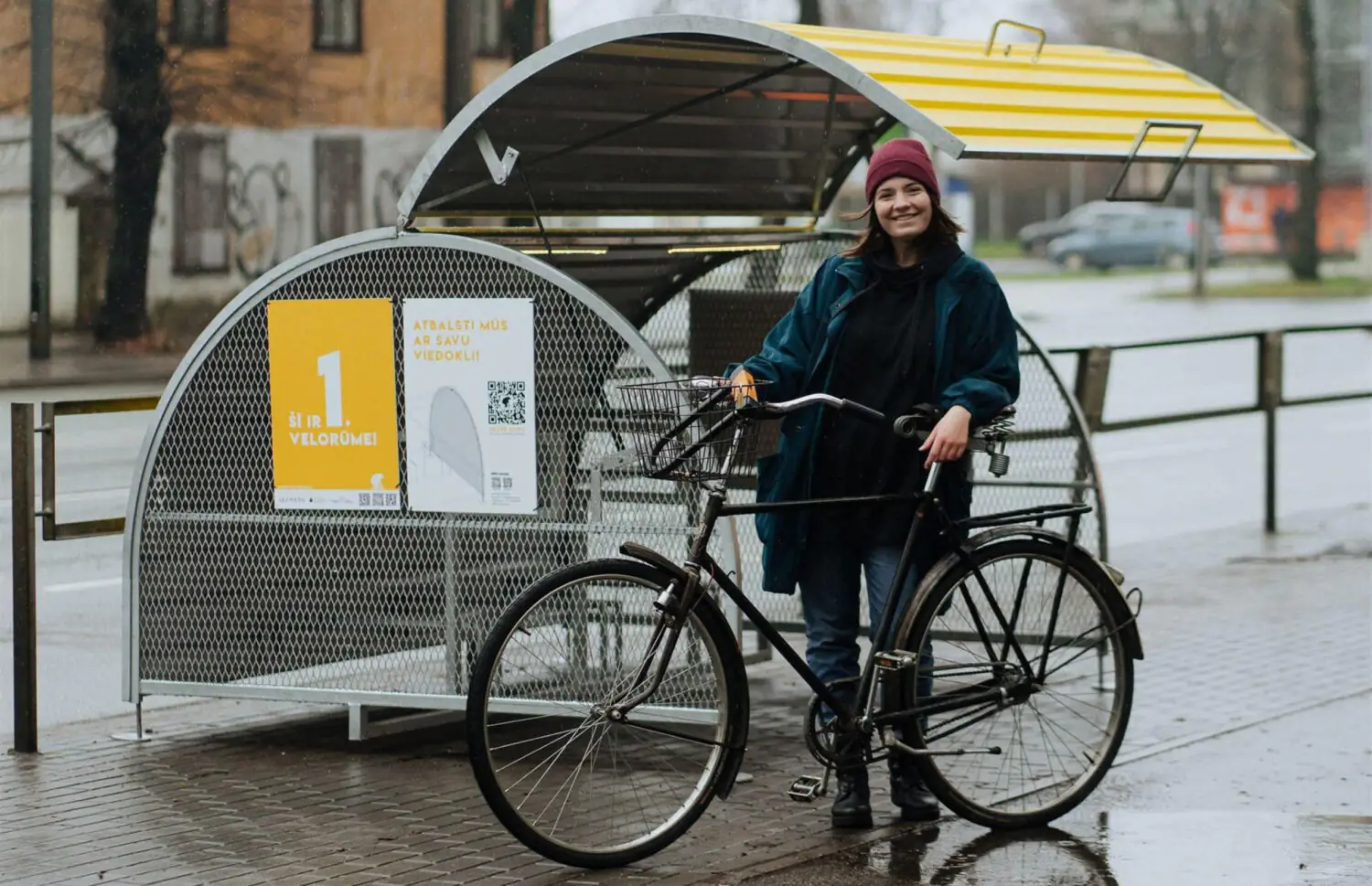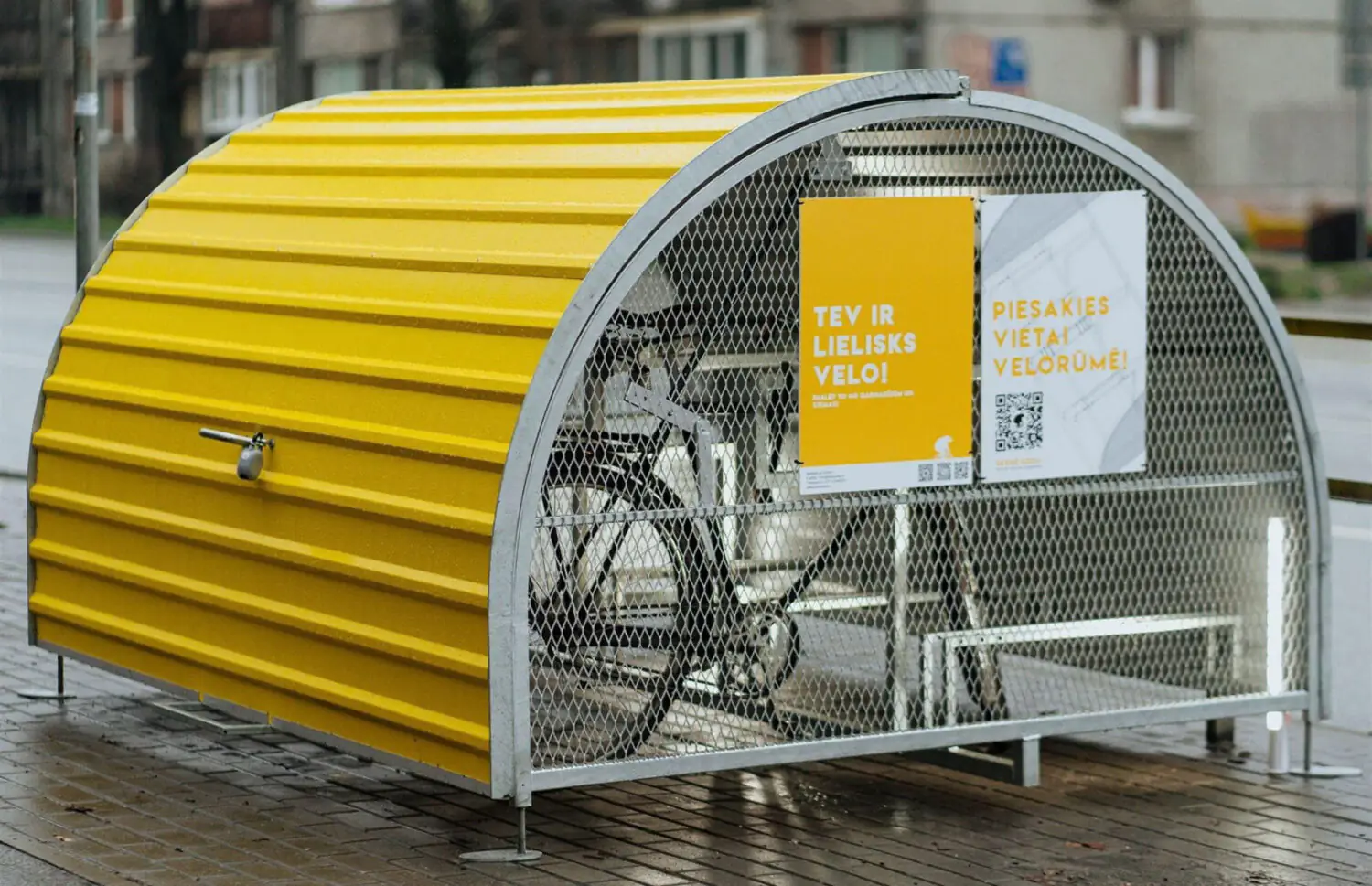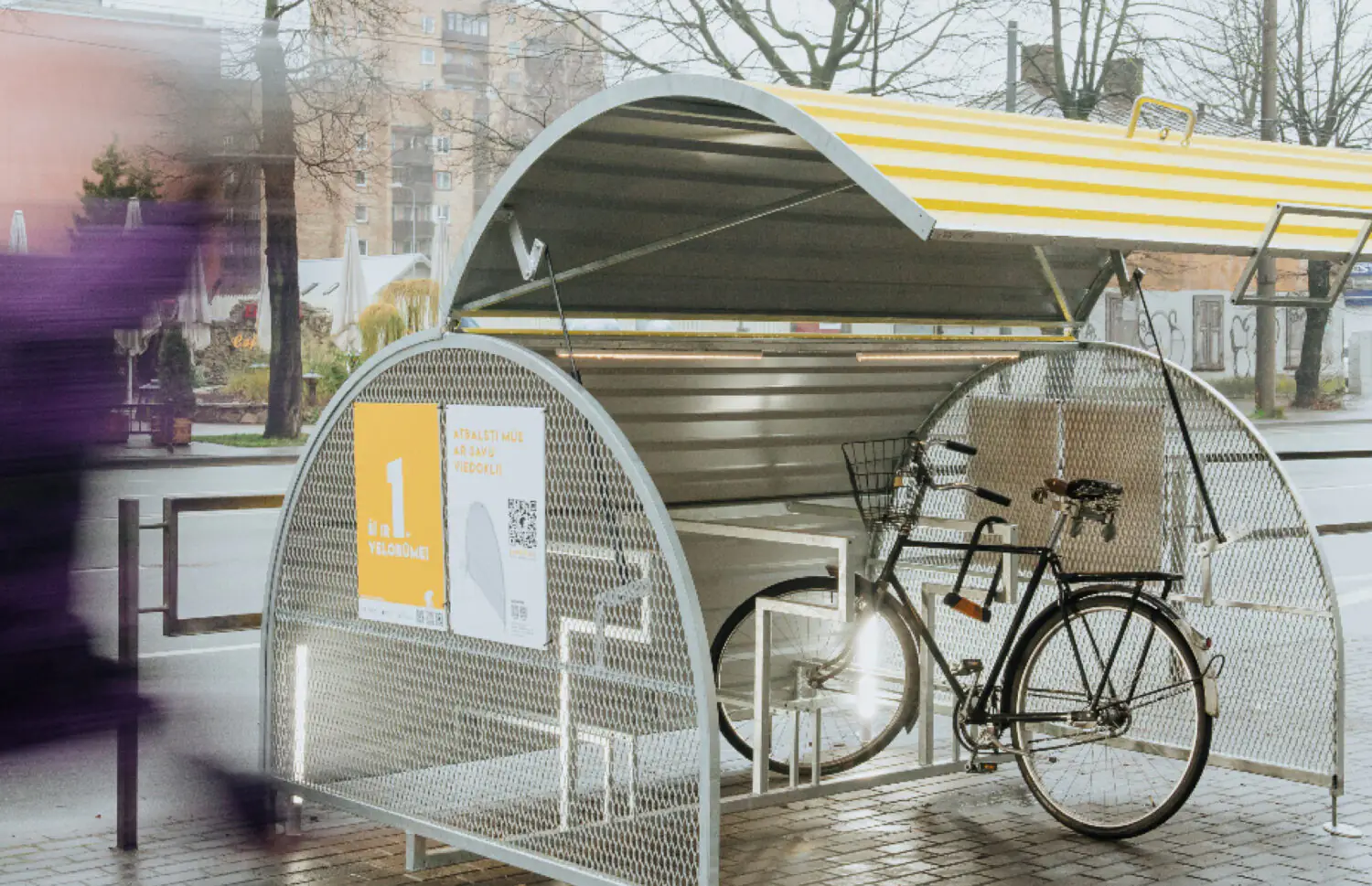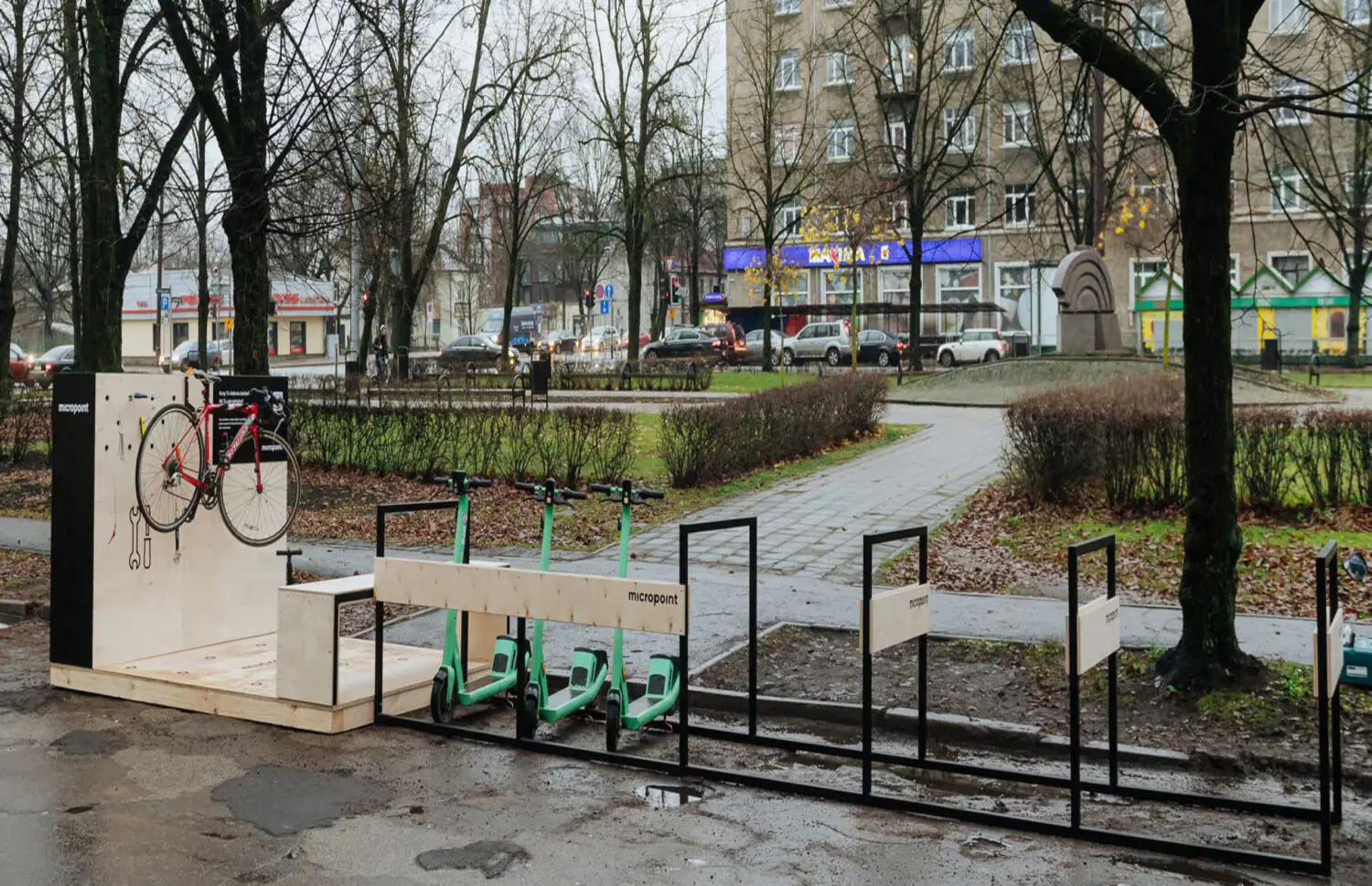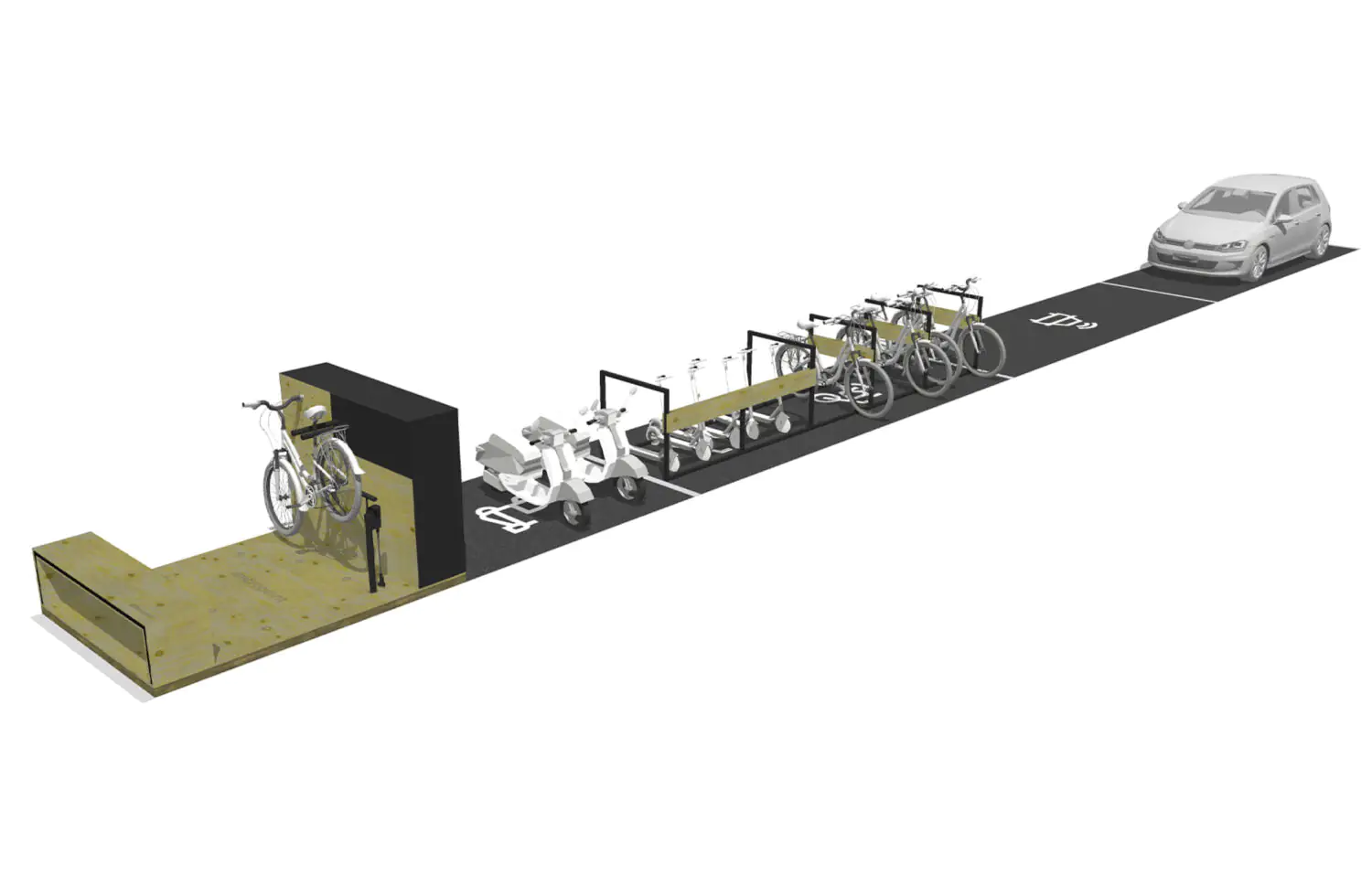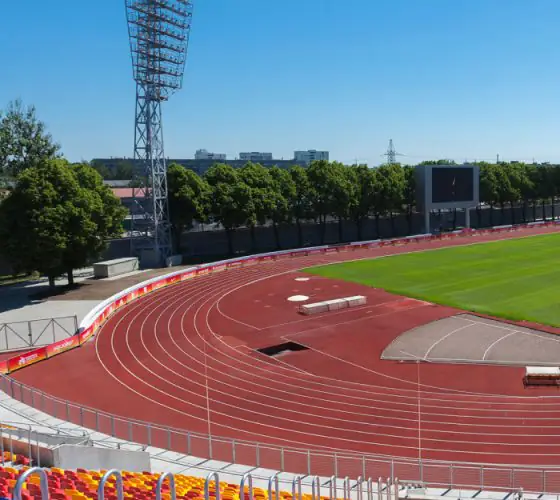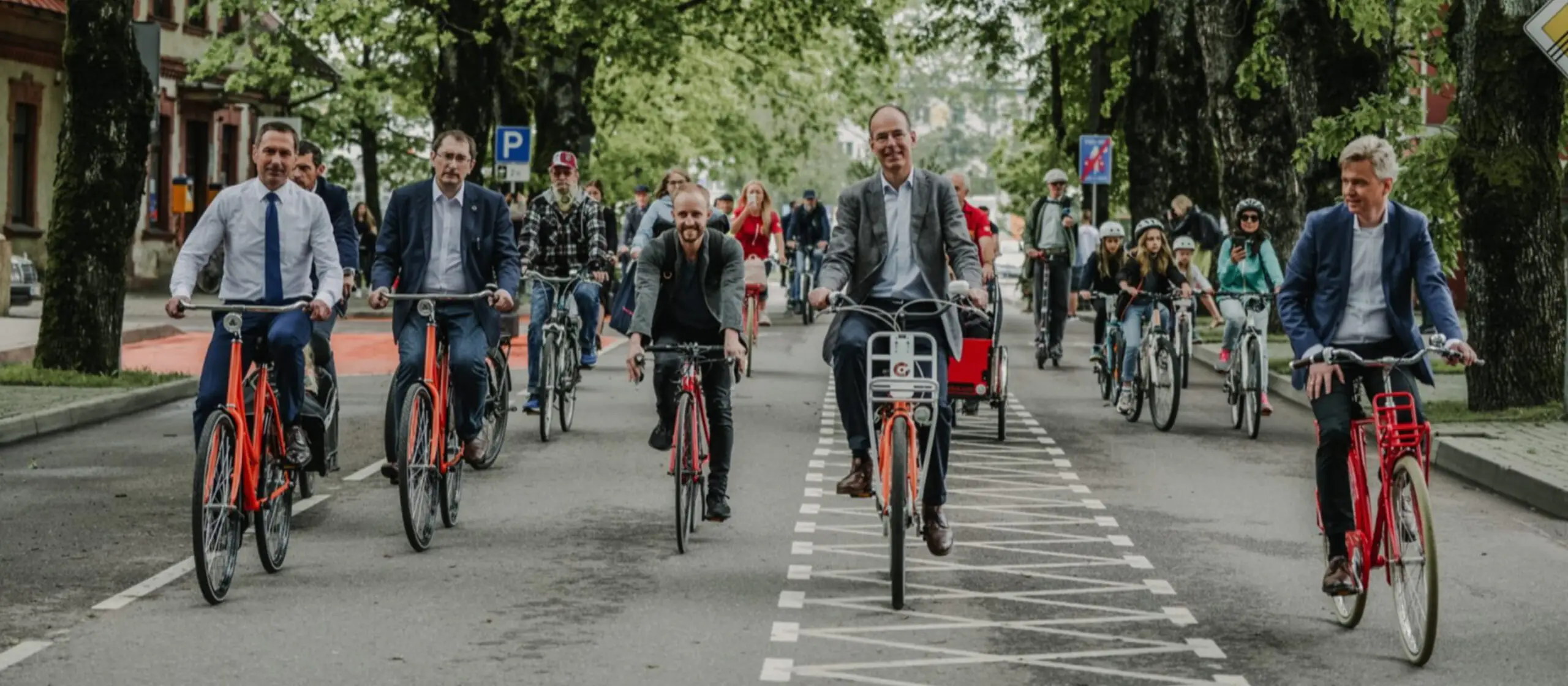
Mobility development contributes to national economic growth and regional development. It will also ensure progress towards a climate-neutral economy. This goal is in line with the European Green Deal, which aims to make Europe the world’s first climate-neutral continent by 2050.
In this context, the development of railways and means of micromobility: bicycles, scooters, balancers and balance wheels is important for Latvia. Also important is the development of pedestrian mobility, and thus comfortable urban spaces for it.
Sustainable transport projects are already being implemented or are being prepared for implementation in Latvia. The most ambitious of them is Rail Baltica, which will strengthen supranational transport links. Two railway stations in Riga will become major urban transport hubs and intermodality points where many passengers will make connections. We told about this project in two articles: “Bridge between the Baltics and Europe” and “Rail Baltica: Two Riga Hubs”.
Around the central station there will be new access roads for different modes of transport, charging stations for electric vehicles, and covered bicycle storage areas.
Fifteen railway mobility points in Riga are also being developed. The mobility points are planned to be established at the following stations Zemitāni, Brasa, Sarkandaugava, Dauderu, Mangaļi, Ziemeļblāzma, Vecdaugava, Vecāķi dzelzceļa stacija, Alfas, Šķirotava, Gaisma, Atgāzene, Biznesa Augstskola Turība, Sloka and Bolderājas. Six of them will be built as part of the European plan for post-Covidian urban and economic recovery. The wording “Mobility Points” means that Riga’s railway stations will be connected to the city’s urban public transport and bicycle and scooter hire points—in other words, they will become developed transfer points.
Six critical mobility points at stations are planned to be realised by mid-2026: Zemitāni, Bolderāja, Sarkandaugava, Dauderi, Ziemeļblāzma, Šķirotava. Mobility points are areas where railway passengers can comfortably transfer to other public transport or means of individual mobility. It is also planned to build covered bicycle car parks at railway stations, so that it is possible to reach the station by bicycle and then change to a train. The feasibility study process for the project was completed in 2022.
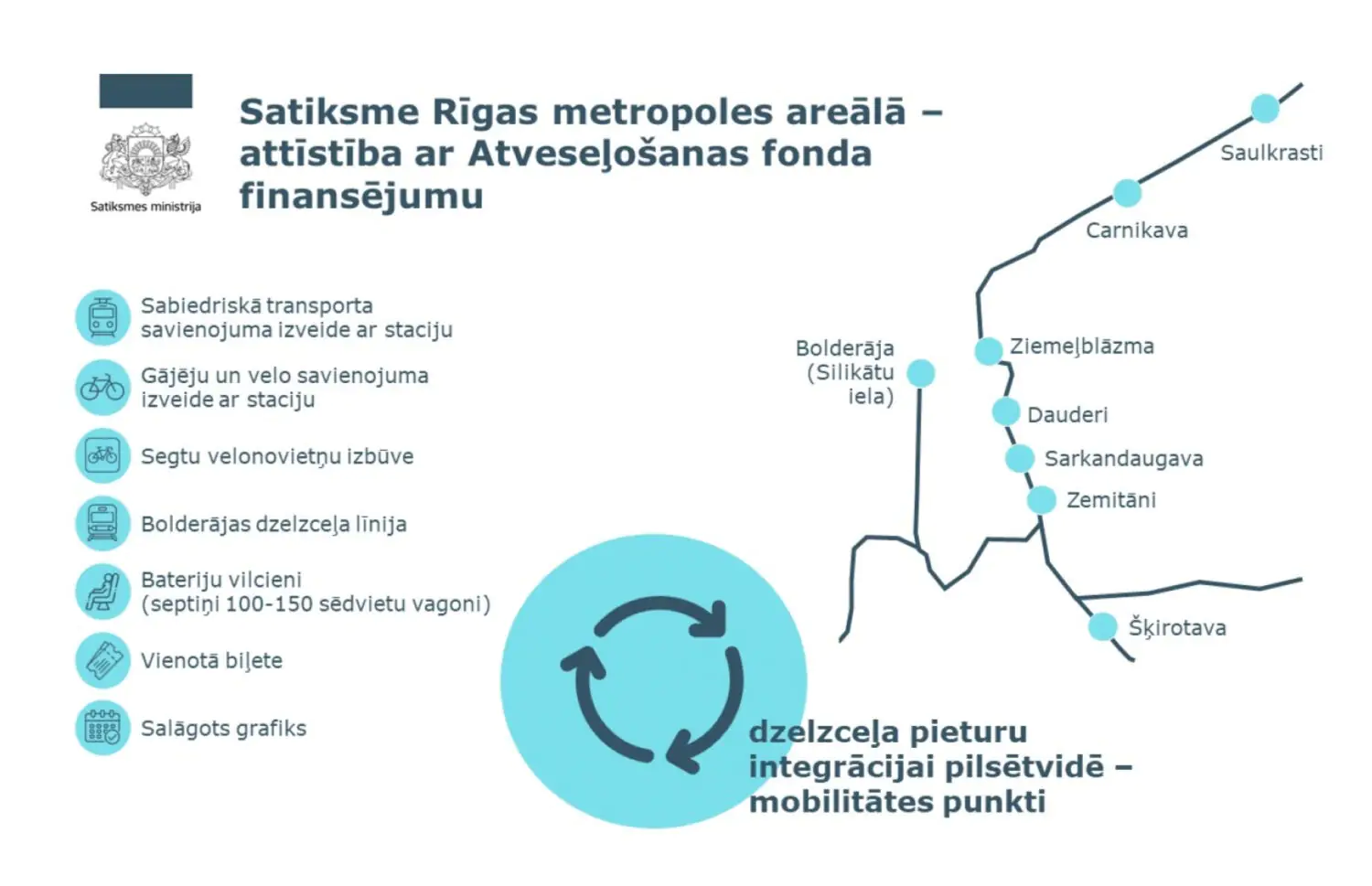
sam.gov.lv
However, in addition to large, costly and long-term projects, in recent years Riga has also become a platform for smaller, but no less significant interventions, balancing on the edge of tactical urbanism and IT startups. They are also aimed at creating a sustainable transport system.
For example, the Riga Energy Agency and engineering company Ie.La inženieri together with VEFRESH developed the first prototype of VEF Mobilitātes punkts in Latvia, which was opened for public use in July 2020. The point is located at the intersection of Brīvības and Gustava Zemgala gat. streets, next to the VEF Cultural Centre.
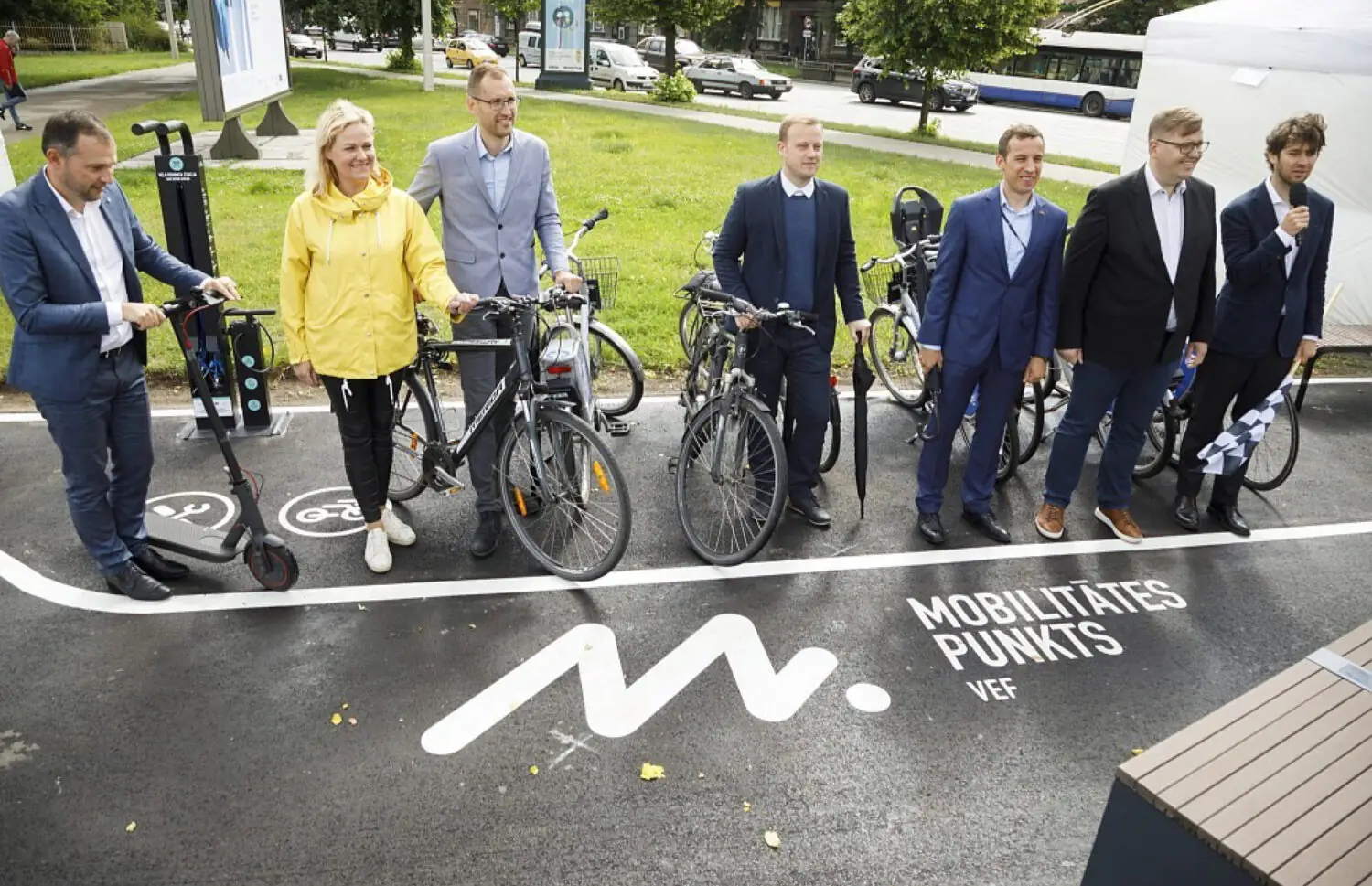
edi.lv
The Mobility Point connects different sustainable modes of transport and provides easy access to them. Its main function is to provide opportunities for travelling in an environmentally friendly way without using a private car. The new mobility point includes:
- Open cycle parking.
- A bicycle repair station.
- A shering station for different modes of transport: bicycles, electric scooters, electric scooters.
- A smart bench with solar charging panel, USB outputs and Wi-Fi.
- Cyclist and pedestrian counter with LED screen.
For example, at the mobility point you can make small repairs to your bike, pump up your tyres, rent another vehicle, connect to Wi-Fi or recharge your phone or other gadgets—and the charging station is solar-powered.
The solution implemented next to the VEF Cultural Centre is unique compared to other mobility points in Europe: it takes into account not only the mobility needs of citizens, but also the interest of the city, scientists and entrepreneurs in collecting and interpreting urban data and promoting innovative solutions.

edi.lv
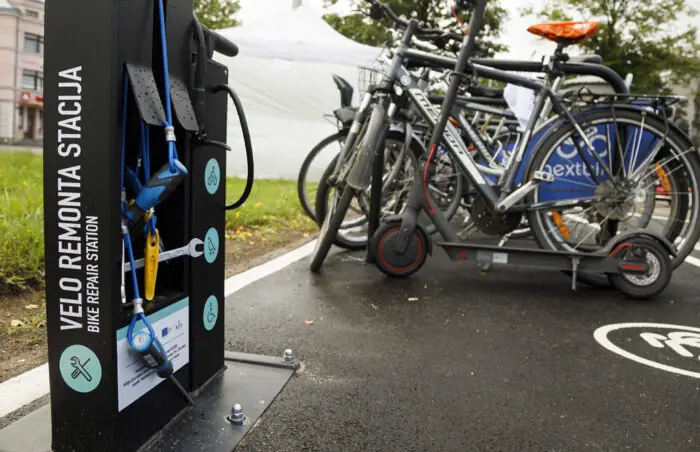
edi.lv
It is for this purpose that a permanent pedestrian and bicycle counter is installed at the station—there is no currently collected data on the intensity of cycling traffic in Riga: for many years, no one has simply collected it. The mobility point also includes a test station with an electricity connection for piloting the Internet of Things (a network of data transfer between physical objects), machine vision and other solutions, as well as collecting various open urban data.
LMT has installed a sensor here that collects data on more than ten different indicators, including air pollution, noise and traffic. The Electronics and Computer Science Institute (EDI) has also installed a sensor that measures air temperature, humidity and active and total solar radiation.
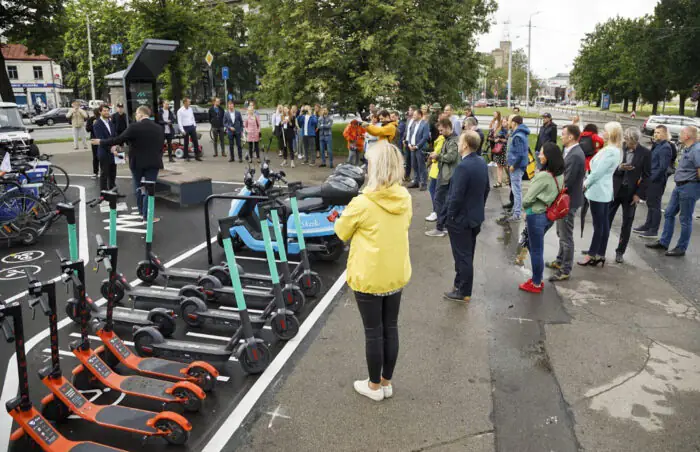
edi.lv

edi.lv
According to the Riga Energy Agency, the VEF neighbourhood mobility point is a prototype, the results of which will form the basis for further development of mobility points in Riga, and potentially in other Latvian cities.
A year earlier, in 2019, Riga City Council, the Ministry of Economics and VEFRESH signed a memorandum of co-operation to turn the VEF district into a pilot area for testing smart city solutions, which envisages co-operation between the public and private sectors to shape the innovative environment and infrastructure within it.
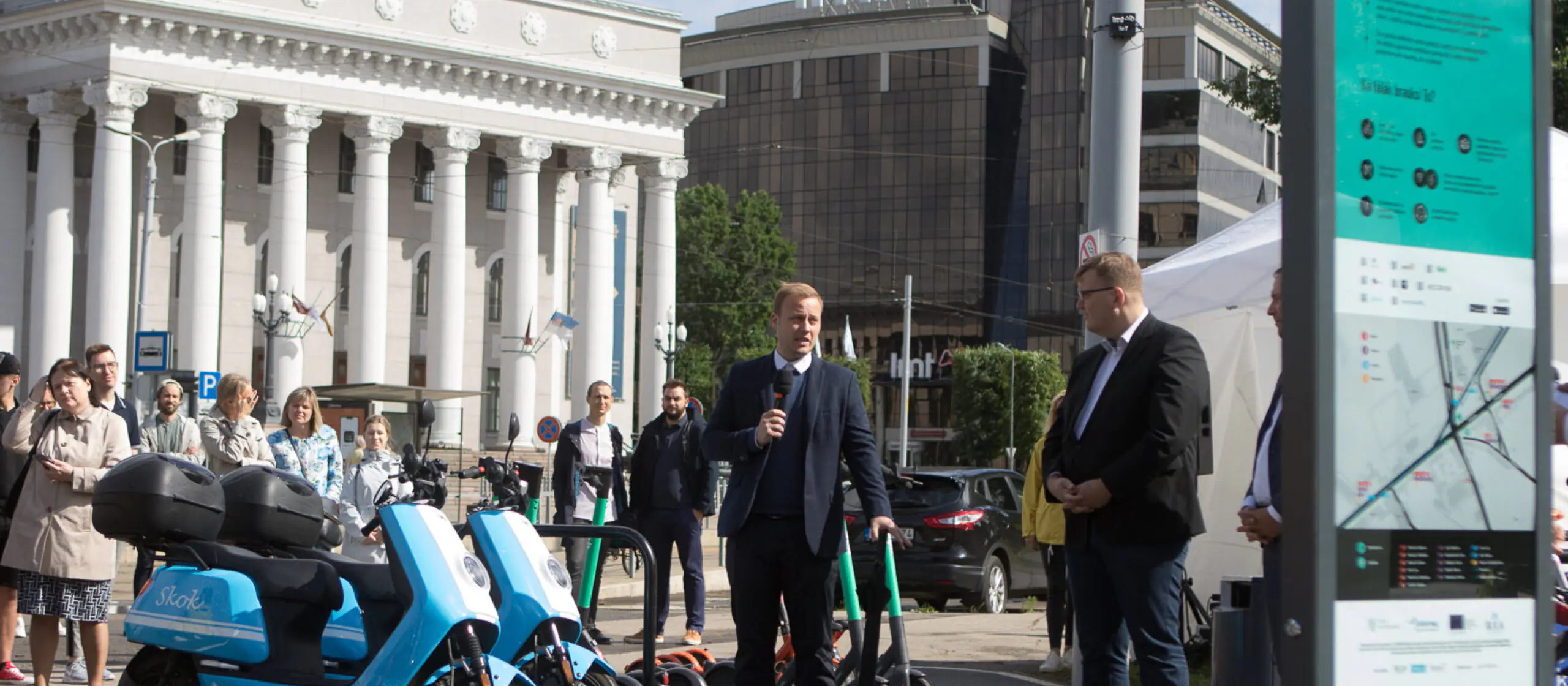
edi.lv
In November 2021, with the support of VEFRESH, as well as Riga City Council and the Institute of Electronics and Computer Sciences, an urban mobility incubator programme was implemented in Riga as part of the business support programme of the European Institute of Innovation and Technology (EIT).
The aim of the project was to solve the problems of urban transport and mobility, to promote the development of innovative start-ups in this field and to demonstrate new products and services in the urban environment. Six teams participated in the incubator. For several months, the incubator teams worked on technical solutions to realise their prototype in the urban environment and continue working on further business development. Here’s what came out:
- The E-stop team has developed a convenient, automated and secure storage facility for scooters, replacing the user’s need for their own individual lock.
- The startup getUgo demonstrated its software for remote control of autonomous vehicles in the city for the first time in Latvia.
- The Simplecharge project is an easy-to-install electric vehicle charging station near city lampposts.
- The Velorūme team came up with a safe and easy-to-use bicycle storage room: closed storage protects bicycles from vandals and bad weather.
- The MicroPoint mobility point prototype is the result of another incubator team’s work. The prototype was installed in 2021 on Zemitāna Square—citizens could try it out for a year. The prototype combined bike parking, a mini repair shop with tools and a bench, and an electric scooter shering station. The project offered a solution to the problem of the “last mile” or “last kilometre”: in this case, the distance from the transport stop to the final destination—the place of residence. This distance can be covered quickly and conveniently with the help of micromobility.
Riga strives for a sustainable and energy efficient strategy for the development of the city. An important component of such a strategy is comprehensive sustainable mobility solutions.
Switching from constant use of the private car to public transport, trains and bicycles or any other means of micromobility is a personal contribution that everyone can make to shaping a climate-resilient future. But for this to work, there must be a strong infrastructure in the city, between cities and between countries that helps to live green without sacrificing personal comfort.
Now Riga and Latvia as a whole are looking for ways to make such a transition comfortable—let’s see what happens.
The article was prepared in collaboration with umagamma project.



